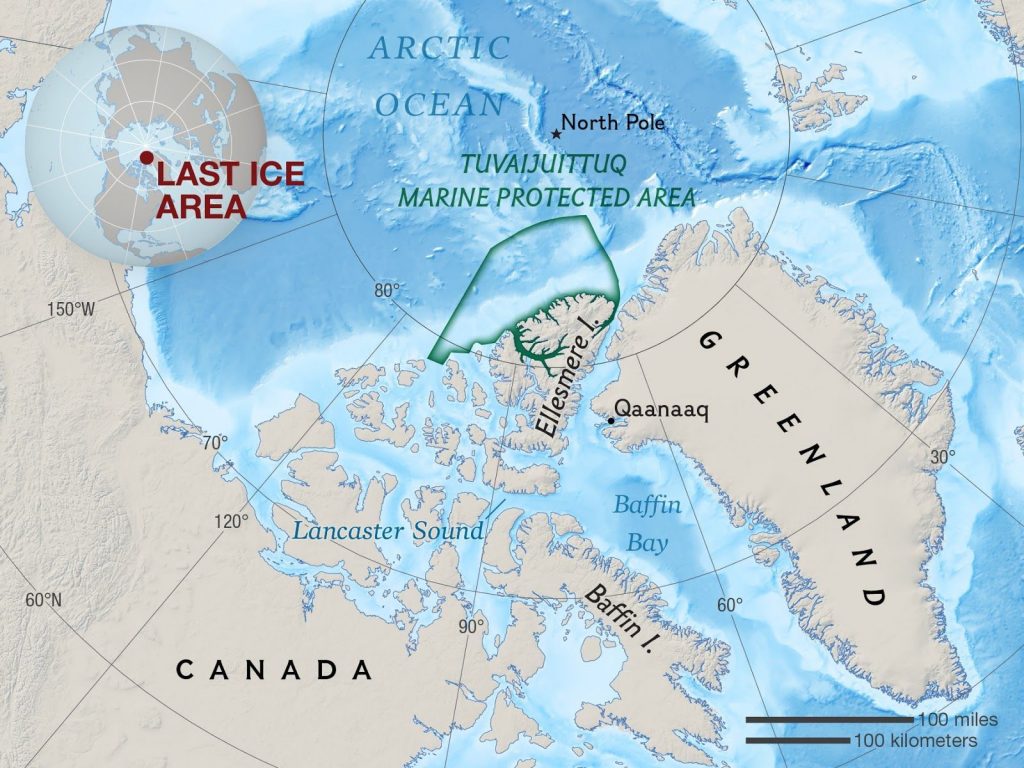Context:
A part of the Arctic’s ice called “Last Ice Area”, located north of Greenland, has melted before expected. Scientists had believed this area was strong enough to withstand global warming.
Relevance:
Prelims, GS-III: Environment and Ecology (Impact of Climate Change)
Dimensions of the Article:
- What is the Last Ice Area?
- Risk faced by the Last Ice Area
What is the Last Ice Area?
- The Last Ice Area is a region, located north of Ellesmere Island in the Canadian territory of Nunavut and Greenland will likely harbor the largest concentration of Arctic wildlife dependent on the sea-ice edge for survival, including bowhead whales, seals, narwhals, and polar bears.
- The Last Ice region is a vulnerable region of the Arctic ocean known locally as Pikialasorsuaq which lies between Canada’s Baffin Island and Northwest Greenland, is both ecologically and culturally significant, yet rapidly disappearing in a warming Arctic.
- This is the region where summer sea ice is expected to survive the longest and therefore act as a refuge for the wildlife that depends on it and hence its importance cannot be understated.

Risk faced by the Last Ice Area
- Record-breaking temperatures have coincided with record lows in Arctic sea ice coverage in recent years, with some scientists even warning that the rate of change taking place is so rapid and remarkable that the Arctic is entering an entirely new climate state.
- The Last Ice Area is a polar region to the north of Canada and Greenland that will be critically important in light of these trends, as the walruses, polar bears and seals that rely on sea ice for sustenance and shelter fight for survival.
- Studies have found that unusual winds played a role by sweeping sea ice out of the area and contributed around 80 percent overall to the decline, while 20 percent of it was due to the multiyear ice thinning, which exposes more of the ocean to sunlight and causes the water to warm and melt surrounding ice floes.
- About 80 percent of thinning can be attributed to weather-related factors such as winds that break up and move the ice around. The remaining 20 percent can be attributed to longer-term thinning of the ice due to global warming.
-Source: Indian Express




